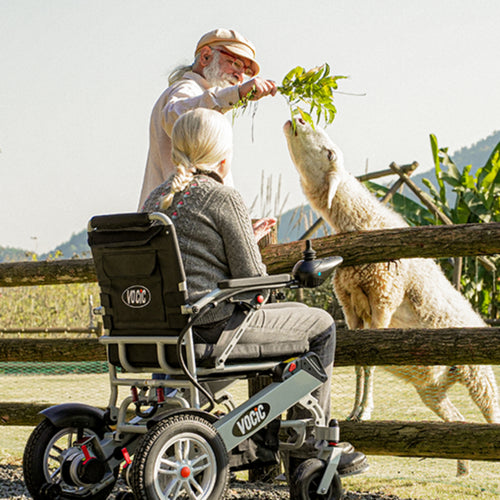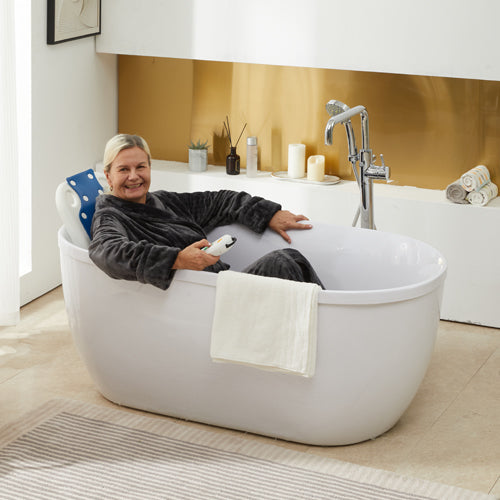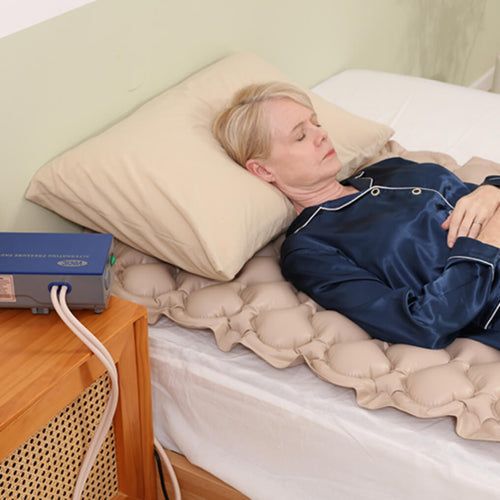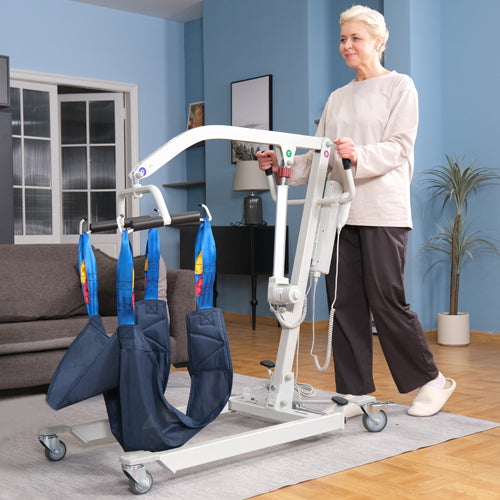As dementia progresses, individuals may require increasing assistance with daily activities, and their ability to care for themselves may gradually decline. A walker can provide essential support in this process, helping maintain a level of independence, slowing physical decline, and enhancing safety and mobility.
In this article, you’ll learn how a walker can support someone with dementia in daily life, along with practical tips to help you assist them in using a walker effectively, extending their self-care abilities, and improving their quality of life.
What is Dementia?
Dementia is a syndrome in which damage to brain cells affects memory, thinking, behavior, and the ability to perform daily tasks. It gradually worsens over time, causing difficulties with cognitive functions such as language, problem-solving, and judgment. As dementia progresses, confusion, disorientation, and impaired decision-making may occur, requiring extensive care support to help manage daily activities and ensure safety.
How Do Walkers Help People with Dementia?
When you are teaching someone with dementia to use a walker, your patience and clear guidance are key. Make sure the walker is adjusted appropriately for their height and strength. Use simple, direct language to explain each step, and consider using visual aids, such as colored tape on the floor, to help guide them.
Regular practice in a safe environment is recommended, as repetition reinforces learning. Always provide positive encouragement to build their confidence. Make sure they feel safe and comfortable as they learn, keep a close eye on their progress, and adjust your approach as needed.
What Mobility Aids Are Available for People with Dementia?
Several types of mobility aids can suit the needs of dementia patients. Here's a quick breakdown:
-
Standard Walkers: Standard walkers have four stable, wheelless legs that stay in place when you put your weight on the walker, providing strong support. However, they require lifting with each step, which can be difficult if you have limited arm strength or coordination.
-
Two-Wheel Walkers: Two-wheel walkers have wheels on the front legs, allowing you to smoothly push them forward without having to lift them completely. They offer a good balance of mobility and stability, making them ideal for people who need support but can control a little forward movement.
-
Roller Walkers: A rolled walker has four wheels, and hand brakes, and is a walker with a seat for easy mobility and rest. A walker with wheels is a good choice if you can walk longer distances but may need to rest. If you are in the advanced stages of dementia, a rollator may not be a good choice because it requires coordination to control the brakes and wheels.
-
Upright Walkers: Upright walkers keep you in an upright posture, reduce back stress, and encourage a natural gait. They have forearm support to help them balance, but they may feel less stable if balance is a major issue.

What Challenges Do People with Dementia Face with Walkers?
As a person with dementia, you may experience significant challenges using walking aids due to the cognitive, physical, and sensory impairments caused by dementia.
Cognitive Impairment
You may find that someone with dementia forgets how and why they use a walker. They may have difficulty with the multitasking required to maneuver a walker and have trouble judging distances or identifying obstacles due to impaired decision-making.
Physical Challenges
Decreased motor skills and muscle weakness can complicate the physical manipulation of a walker for someone with dementia. Additionally, changes in gait and balance can increase their risk of falls.
Perceptual Difficulties
Visual-spatial impairments can make it difficult for you to help them navigate around obstacles or through doorways. Disorientation can further hinder the effective use of a walker, as they may forget their destination or become confused about their surroundings.
Psychological Barriers
People may be reluctant to use a walker due to fear of falling, especially if they have fallen before. Some may refuse to use mobility aids because they symbolize a loss of independence.
Environmental Factors
Home and care facility spaces may not be suitable for the use of walkers, with narrow hallways and cluttered areas creating difficulties. Additionally, a poorly fitting or poorly maintained walker can reduce its effectiveness and safety.
How Do You Teach Someone with Dementia to Use a Walker?
To better help you teach someone with dementia to use a walker and the mobility support it can provide, you can take these steps.
Understanding the Patient's Needs
First, you need to assess their current mobility, cognitive status, and physical health. Knowing their specific stage in the development of dementia can help you develop a personalized teaching plan. As well as adjust their daily environment to ensure safety and comfort.
Use Simple, Consistent Instructions
People with dementia may have learning and memory difficulties, so use short and consistent instructions. During teaching, you should repeat simple instructions such as "Put your hands here and move forward slowly." This can strengthen their memory and promote learning.
Use Hands-On Guidance
Before using it, you may need to guide their hands on the walker or even hold their hands to help them. In the early stages, walking side by side with them and gently placing your hands on their back or shoulders can provide additional support and a sense of security.
Combine Visual and Verbal Prompts
For patients who have difficulty performing tasks, you can use visual and verbal prompts. You can use conspicuous markings in the practice area or labels on the walker to indicate the steps. Short verbal prompts such as "Stop and rest now" can help them better master the skills of using the walker.
Practice Regularly
Regular practice is important for enhancing the memory and confidence of people with dementia. You should schedule multiple short practice sessions per day, rather than occasional longer sessions, to enhance their learning and make practice more manageable and sustainable.
Be Patient and Encouraging
The teaching process requires a lot of patience and positive encouragement on your part. Stay positive even when progress is slow. Emphasize every small success, such as placing your hands correctly, as worthy of praise and encouragement. This positive encouragement can boost their confidence and encourage them to keep trying.

What Are Some Practical Tips for Daily Walker Use?
-
Keep the Walker Accessible: Position the walker in plain sight and within easy reach. This placement reduces the risk of the person forgetting to use it and helps establish a routine.
-
Use Reminder Notes: Attaching simple reminder notes to the walker, like “Use me when you stand up,” can encourage consistent use.
-
Label Pathways: If necessary, label or highlight common walking paths in the home to guide the user and make navigation easier.
-
Monitor Fatigue: Pay attention to the person's energy level. If they seem tired, encourage them to rest and use a walker with a seat or a 4 wheeled walker if needed.
When Should You Seek Professional Help?
If a loved one is having persistent trouble using a walker safely, it may be time to consult a professional, such as a physical or occupational therapist. These specialists can assess the person’s specific needs and design a personalized training plan. In some cases, caregivers may also benefit from professional guidance to learn how best to assist with walker use.
It’s especially crucial to seek help if there are signs of frequent falls, worsening balance issues, or heightened anxiety related to mobility. Medical professionals can also recommend alternative aids or suggest adjustments in the home to improve safety.
Conclusion
Teaching someone with dementia to use a walker requires patience, simple instructions, and regular practice. Using a walker can support their independence, although there may be some challenges. With a tailored approach and seeking professional help when necessary, you can ensure they move more safely and have a better quality of life.









